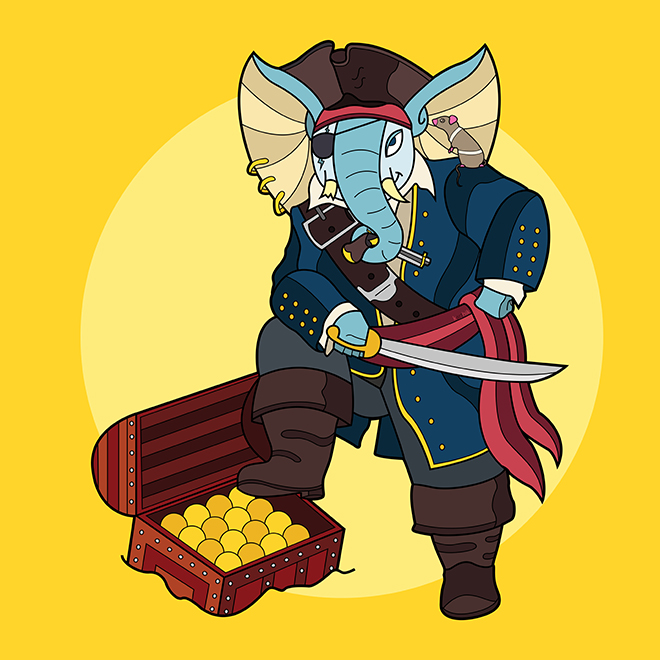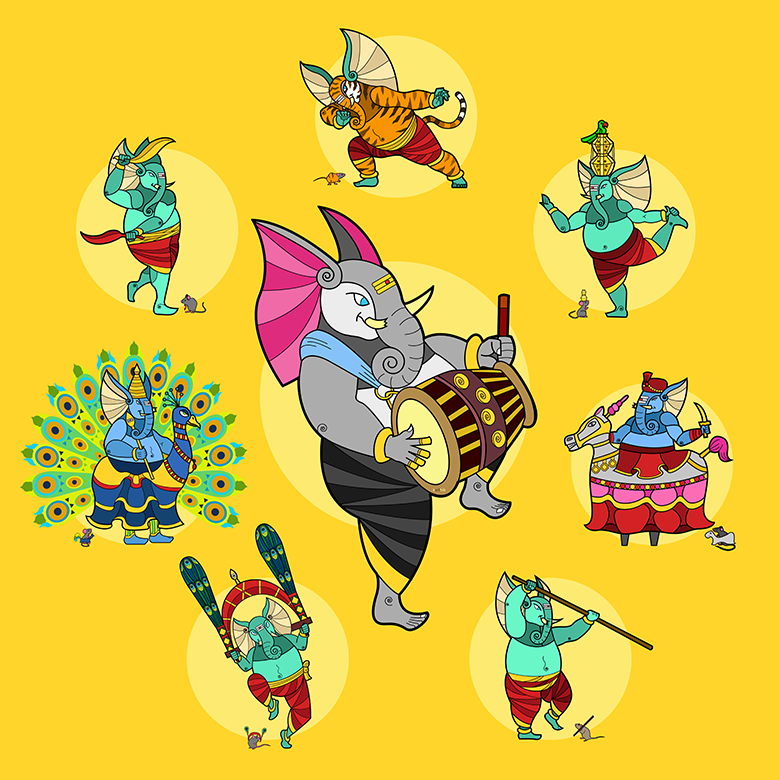Based on the Kalyana Saugandhika episode in the Mahabharat.
During their exile in the forest, Draupadi smells a wonderful fragrance coming in the breeze and asks Bheema to go find out what’s causing it. On his way to find out, Bheema encounters an old monkey blocking his way outside a banana grove.
“Move your tail so that I may pass,” says the mighty Bheema.
“But I’m too weak and tired, why can’t you just hop over it?” asks the old monkey.
“It’s against my code of honor to hop over someone,” says Bheema.
“Then you’ll have to move my tail yourself,” says the old monkey.
“Ha, I’ll move your puny tail and you as well in one swift move!” Bheema responds.
Bheema tries with all his might but he’s unable to budge the old monkey’s tail. Suddenly humbled and suspecting a divine intervention, he respectfully questions the monkey’s identity. The monkey of course, is Hanuman, technically Bheema’s old brother, since they are both children of the wind god Vayu. Hanuman gives his blessings to Bheema and then counsels him on the dangers ahead and where he can find the sacred flower giving off the wonderful fragrance.
With Hanuman in particular, I’ve always been fascinated with his tail and tried to combine it with celtic knot designs to create both the border for the piece as well as some geometric shapes within the piece. On the outside, the Kalyana Saugandhika flower that Bheema was searching for decorates the borders.



















